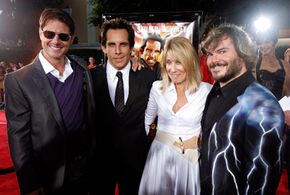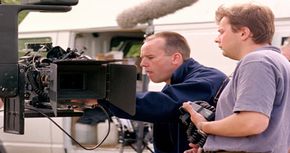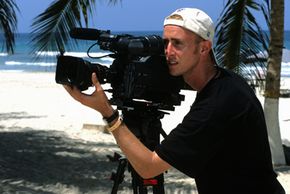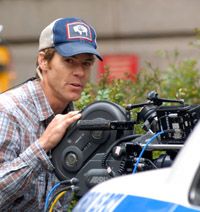Movie filming techniques have come a long way from placing one or two stationary cameras in front of a stage set where actors read their lines. Consider the challenge of filming the opening scene of "Tropic Thunder" (2008). The scene, which was shot live, introduces the main characters in a firefight at a helicopter landing area and ends with a huge napalm explosion.
Advertisement
Cinematographer John Toll, the director of photography for the movie, says that the filmmakers only wanted to film the tricky scene once because it required so many live explosives. For him, that meant not only figuring out the best angles and camera placement but also considering and planning for everything that could go wrong.
To capture the scene on film, Toll and his camera operators used seven or eight cameras on the explosion, a couple of angles for blue screen plates that would be used later for close-ups of the actors and a camera operator shooting from a helicopter. The actual filming went off without a hitch.
But while the opening scene may have been the most complicated, "Tropic Thunder" called for more quick thinking and a range of cameras to capture jungle warfare. Over the course of 10 weeks filming on Kauai and then additional scenes at Universal Studios, two-time Oscar winner Toll switched among cameras on dollies and cranes, Steadicams and handheld cameras on the ground, on moving trucks and in helicopters.
And beyond the cameras were decisions about which lens and frame rate to use in each scene, as well as film format -- in this case, Super 35 for wide screen -- and value of a digital intermediate in postproduction [source: International Cinematographers Guild].
This is all part of the cinematographer's job in creating the movie magic that we see at a theater. But what exactly does a cinematographer do? What skills are needed? And how can a person become a cinematographer? Read on to find out.
Advertisement



